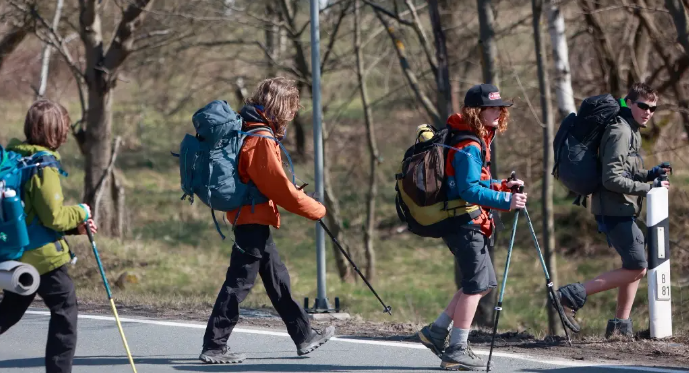The Bluefield Wilderness lawsuit has recently caught widespread attention, making it a crucial topic for discussion. As Balefire Wilderness, a therapeutic outdoor program, faces legal challenges, there are many questions about what the lawsuit entails, its implications, and its broader impact. This article provides an in-depth look into the lawsuit, the importance of wilderness therapy programs, potential challenges, and legal outcome
What is Balefire Wilderness?
Balefire Wilderness is a wilderness therapy program designed to help struggling teens and young adults. Located in Idaho, it combines outdoor adventures with therapeutic activities to promote personal growth, self-awareness, and behavioral change. The program caters to individuals dealing with anxiety, depression, trauma, and other mental health issues. Trained therapists and counselors lead participants through various outdoor activities such as hiking, camping, and group exercises, all while providing therapeutic support.
The Role of Wilderness Therapy Programs
Wilderness therapy programs like Bluefire Wilderness offer a unique approach to mental health treatment. These programs take individuals out of their familiar environments and place them in nature, providing opportunities for introspection and personal development. Participants often face physical challenges, which in turn, help build resilience, self-esteem, and teamwork. Wilderness therapy is typically recommended for adolescents dealing with emotional, behavioral, or psychological challenges that traditional therapeutic settings fail to address.
Overview of the Bluefire Wilderness Lawsuit
The Bluefire Wilderness lawsuit centers around allegations made by former participants and their families. Claims include neglect, emotional distress, and inadequate care provided during the program. This lawsuit highlights concerns about the safety and ethical standards of wilderness therapy programs. The legal dispute has sparked debates over the regulations governing such programs and whether current standards protect vulnerable participants adequately.
Key Allegations in the Bluefire Wilderness Lawsuit
Several key allegations have surfaced in the Bluefire Wilderness lawsuit:
- Neglect: Plaintiffs allege that the program did not provide the necessary supervision and care.
- Emotional Distress: Participants claim they experienced emotional trauma during their time in the program.
- Physical Harm: Some former participants allege that they suffered physical injuries due to insufficient safety measures.
- Inadequate Medical Attention: Reports suggest that medical issues may have been ignored or improperly addressed.
These allegations have raised concerns about the effectiveness and safety of wilderness therapy programs as a whole.
Legal Grounds for the Lawsuit
The Bluefire Wilderness lawsuit is based on several legal claims:
- Negligence: The plaintiffs argue that the program failed to provide proper care and supervision, resulting in harm.
- Breach of Duty of Care: As a therapeutic program, Bluefire Wilderness has a responsibility to protect its participants, which plaintiffs claim was breached.
- Emotional and Physical Trauma: The lawsuit includes claims of emotional and physical trauma, seeking compensation for the long-term effects experienced by participants.
These legal grounds will be crucial in determining the outcome of the lawsuit.
Potential Impacts of the Lawsuit
If the Bluefire Wilderness lawsuit results in a ruling against the program, several significant impacts could follow:
- Increased Scrutiny: Wilderness therapy programs may face heightened scrutiny and stricter regulations.
- Policy Changes: New laws could emerge to address the safety and oversight of these programs.
- Financial Consequences: Bluefire Wilderness could face substantial financial penalties or settlements.
This case may set a precedent that affects other similar therapeutic programs.
Previous Lawsuits in Wilderness Therapy Programs
Bluefire Wilderness is not the first wilderness therapy program to face legal challenges. Other programs have also encountered lawsuits, often related to participant safety, staff conduct, and the overall therapeutic model. Notable examples include:
- Aspen Education Group: Faced multiple lawsuits for alleged mistreatment of participants.
- SageWalk Wilderness: Shut down after a death during a wilderness therapy program.
These cases highlight recurring issues in the industry and underscore the need for better oversight and regulatory standards.
Common Challenges in Wilderness Therapy Programs
Wilderness therapy programs, while beneficial, come with challenges:
- Safety Concerns: The outdoor environment presents risks such as injury, extreme weather, and wildlife encounters.
- Inadequate Staff Training: Some programs employ staff without proper training in mental health care or wilderness survival.
- Participant Vulnerability: Adolescents in these programs are often vulnerable, making it crucial for programs to provide appropriate psychological and physical care.
These challenges need to be addressed to protect participants and improve the therapeutic experience.
Solutions to Address Safety and Care in Wilderness Therapy
To improve the safety and effectiveness of wilderness therapy programs, several solutions have been proposed:
- Improved Staff Training: Programs must employ trained professionals who understand both therapeutic techniques and wilderness safety protocols.
- Enhanced Safety Protocols: Implementing stricter safety measures for activities such as hiking, camping, and other outdoor adventures can reduce the risk of injuries.
- Mental Health Oversight: Regular mental health evaluations should be mandatory to monitor participant well-being throughout the program.
Implementing these solutions could help prevent incidents that lead to lawsuits like the one involving Bluefire Wilderness.
The Importance of Accountability in Therapeutic Programs
Accountability is critical in therapeutic programs to maintain trust and protect participants. Programs like Bluefire Wilderness must adhere to high ethical standards to ensure the safety and well-being of their participants. Without proper accountability, programs risk causing harm rather than facilitating personal growth.
Real-Life Examples and Case Studies
Several real-life cases highlight both the benefits and risks of wilderness therapy:
- Case Study 1: A former participant of a wilderness therapy program in Utah shared how the experience helped them overcome severe anxiety and develop better coping mechanisms. Despite the challenges, the structured environment fostered personal growth.
- Case Study 2: A lawsuit against a different wilderness therapy program revealed inadequate staff training, leading to physical and emotional harm for several participants.
These examples underscore the varying outcomes of wilderness therapy and the importance of proper program management.
Parental Concerns Regarding Wilderness Therapy
Parents considering wilderness therapy for their children often worry about:
- Safety: Are their children safe in an outdoor environment with potentially dangerous conditions?
- Staff Qualifications: Do the staff have the right training to handle both mental health issues and wilderness survival?
- Long-Term Effects: Will the experience have lasting positive effects on their child’s mental health, or could it cause further emotional distress?
Addressing these concerns is essential for the credibility and success of wilderness therapy programs.
Legal Outcomes: What Could Happen Next?
The Bluefire Wilderness lawsuit could lead to several potential legal outcomes:
- Settlements: The program may opt for a settlement to avoid prolonged legal battles.
- Court Rulings: If the case goes to trial, a court ruling could establish new legal standards for wilderness therapy programs.
- Regulatory Changes: The case might prompt changes in the laws governing therapeutic programs, ensuring better oversight.
The outcome of the lawsuit will likely influence the future of wilderness therapy as a whole.
The Future of Wilderness Therapy Programs
Wilderness therapy has proven to be an effective treatment for many individuals, but the Bluefire Wilderness lawsuit raises important questions about its regulation and safety. Moving forward, programs will need to focus on:
- Better Regulation: More stringent rules and regulations may be imposed to ensure participant safety.
- Transparency: Programs will need to be more transparent about their methods, staff qualifications, and safety protocols.
- Innovations in Care: Incorporating new therapeutic techniques and technologies may improve outcomes for participants.
The future of wilderness therapy lies in addressing these concerns while continuing to offer a unique and transformative experience for participants.
Conclusion
The Bluefire Wilderness lawsuit has highlighted critical issues within wilderness therapy programs. While these programs offer potential benefits for adolescents struggling with mental health issues, they must prioritize participant safety, staff training, and ethical standards. Legal outcomes from this case could reshape the wilderness therapy landscape, promoting greater accountability and regulation. For more info visit Techno Buzz.
FAQs
- What is the Bluefire Wilderness lawsuit about?
The Bluefire Wilderness lawsuit involves allegations of neglect, emotional distress, and physical harm by former participants, questioning the safety and care provided by the program.
- Are wilderness therapy programs safe?
Wilderness therapy programs can be safe if they have trained staff, proper safety protocols, and regular mental health oversight. However, some programs face legal challenges due to inadequate care.
- What are the benefits of wilderness therapy?
Wilderness therapy offers benefits like improved self-esteem, emotional regulation, and teamwork. It helps participants overcome mental health challenges through structured outdoor activities.
- How can wilderness therapy programs improve?
Improvements can include better staff training, stricter safety measures, and more transparency in their therapeutic approaches and care standards.
- What will happen if Bluefire Wilderness loses the lawsuit?
If Bluefire Wilderness loses the lawsuit, it could face financial penalties, increased regulation, or even program closure, depending on the court ruling or settlement.

